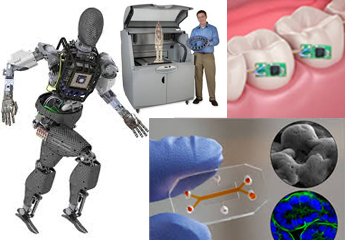
In today’s fast paced life, we all crave for technologies which can make our job easy and efficient at the same time. Technology has progressed and been progressing at a faster rate to meet up this high demand of the consumer. Today let’s review some of the prototypes which have good potential to be called as the future technology.
- 3-D Printing: A technology similar to industrial robotic which helps to make a three dimensional objects of any shape out of e-data source using a process called as additive process. In this process, the successive layers of material are laid down under the control of computer. An example of its application can be applied to the way we all shop. Let’s consider a customer visits the shop to buy the shoe which otherwise he can get it printed by means of 3- D printing sitting at home. 3- D printing has enormous potential to change the way we dwell into each application arena. It has potential from printing the human tissues in medical domain to printing the complex architectural structures and sculptures etc.
- Micro-chips of human organs: The process of clinical trial is very much tedious and time consuming. Researchers have tried to emulate the similar environment in the form of micro- chip of human tissues and organs in which the trial can be performed efficiently and with efficacy at the same time. Researchers have to come up with more microchips of various organs and tissues to make sure the scope has a wide coverage of the study and trial.
- Atlas humanoid robot: This robot is equipped with multiple sensors and computer which eases multi-tasking without a direct supervision of human. The intention is to assist humans in rescue operations as well during earthquakes and other such natural calamities. These robots will also be able to walk through rough terrains and break through walls and doors to rescue trapped victims. Several models of the same have been engineered to face off the trials soon.
- Tooth sensor: What if your tooth is decayed and you are informed of the same before the onset? Researchers at Princeton have been working on a tooth decay detecting sensor which is in the form of tattoo. This would help to detect tooth decay and other gum diseases. The sensor can also be programmed to detect various types of bacteria. This is in turn would help to detect other types of illnesses.
